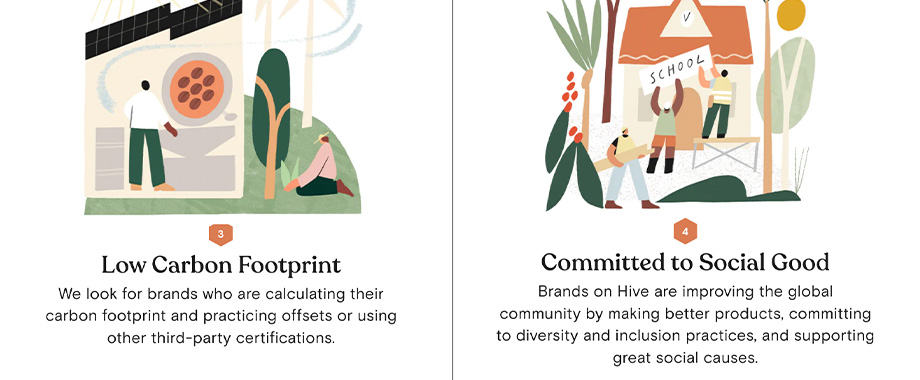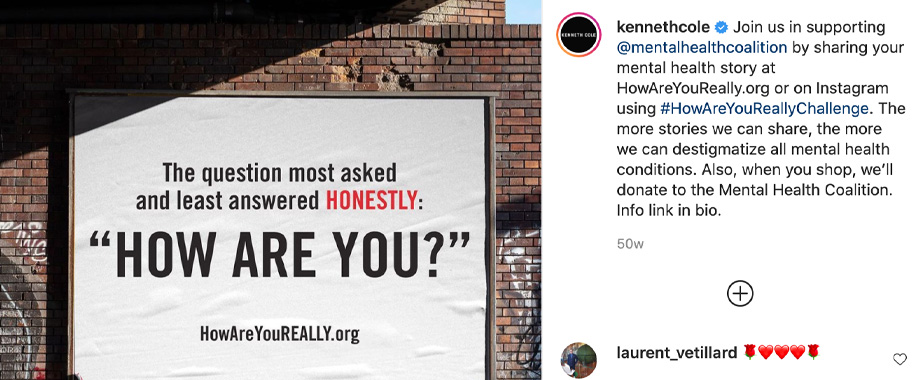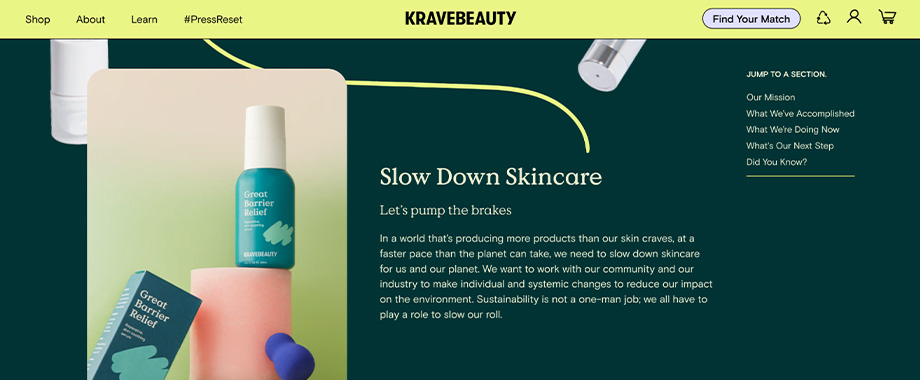What is Social Impact and How Can Your E-Commerce Brand Use it as a Growth Lever?
by Samantha De Hoyos with ShoppingGives
As the competition within the eCommerce space grows, it can be difficult for brands to differentiate themselves for consumers. In recent years, the movement of conscious commerce has also grown. More and more consumers are beginning to make purchase decisions based on shared values. So what does the rise of social impact mean for e-commerce brands?
There is an opportunity to stand out against the competition and win the attention of the growing population of socially conscious consumers. And, the solution lies in social impact. Consumers continue to value purpose alongside price and product. So, e-commerce brands who are tapped into social impact are more likely to drive stronger customer loyalty and increase revenue. Here’s everything you need to know about social impact and how your e-commerce brand can leverage it to drive business growth.
What is Social Impact?
Social impact is a positive change that addresses social challenges or injustice. In recent years, consumers have become more concerned about businesses’ impact on society and the planet. This growing concern has led to shifts in their buying behavior in order to support more purpose-driven brands, even despite previous brand loyalty.
This is especially true with the younger generation of consumers. 83% of Millennials say it’s important for the companies they buy from to align with their beliefs and values. Not only are these consumers making purchase decisions based on their values, they’re also taking time to do more research on a company to determine whether they truly are purpose-driven or not.
It’s no longer enough for a brand to make a statement on a social issue without putting action behind it. Today’s socially conscious consumers are looking to their favorite brands to serve as advocates for social change. A recent study found that consumers believe brands are a more powerful force for societal change than government.
Why is Social Impact Beneficial for Business?
With the rise in the conscious commerce movement, purpose-driven brands are at an advantage. E-commerce brands are engaging in social impact are better equipped to attract and retain socially conscious consumers. This is now proving to increase customer loyalty, repeat purchases, and revenue. Being purpose-driven is also good for employee retention and loyalty as well. The numbers speak for themselves:
- People are 72% more likely to be loyal to purpose driven companies.
- Consumers are four to six times more likely to purchase, protect, and champion purpose-driven companies.
- 71% of Millennials said they would pay more for a product if they knew some of the proceeds went to charity.
- When a company leads with purpose, people are 78% more likely to want to work for that company.
- 91% of employees say their company’s purpose makes them feel like they are in the right place as we weather ongoing challenges, such as the pandemic and economic risk.
It’s clear that social impact is good for business and your bottom-line, and making your impact efforts easy for customers to discover is key for a successful strategy. Brands who integrate their social impact efforts into their marketing channels (also known as cause marketing), are better able to demonstrate their authentic commitment to doing good.
Social Impact in Action
Natori is a 45-year old design house that prioritizes social impact initiatives to help empower and educate women, fight against racism, and stand against structural inequality around the world. Built on a foundation of doing good, Natori engages their customers in their social impact initiatives throughout the customer journey.
Natori recently tested to see how impact-focused messaging in paid advertising would perform against their traditional messaging tactics. Natori’s impact-focused ads included messaging that was focused on creating donations for the cause of their customer’s choice on every purchase.

After the ad campaign had completed, Natori discovered that the impact-focused ads far outperformed their general ads and helped them drive stronger marketing performance.
- 2.5% Increase in Click-Through Rate
- 109.8% Increase in Conversion Rate
- 136.5% Increase in Return on Ad Spend
How Can Your Brand Get Started With Social Impact?
So, how can your eCommerce brand successfully use social impact as a lever to drive business growth? Follow these 4 steps to get started:
1. Identify Your Brand Values
If your brand is new to social impact and you’re planning on building a strategy from the ground up, the best place to start is with your brand values. Your brand values are your guiding principles. They offer a great view into what your brand supports and believes in.
If you are committed to reducing your impact on the environment, consider a strategy around adopting more sustainable business practices. Perhaps your brand is women-led and founded, consider a strategy around empowering women.
Brand Example
Hive Brands is driven by sustainability and is on a mission to make sustainable shopping a mainstream habit. Throughout their website, Hive Brands highlights their values and shares details into their company practices and processes to help them achieve their impact goals.

2. Align Your Values with a Cause or Nonprofit
Once you’ve identified what your brand supports, put those values into action by aligning your values with a cause. Partnering with a nonprofit organization is a great way to support an already existing mission. Plus, a nonprofit partnership can bring more credibility to your brand’s impact efforts. Consumers are more likely to believe that your efforts are authentic when they trust your intentions behind supporting a cause.
If your brand is passionate about diversity and inclusion, you can partner with a nonprofit like the Equal Justice Initiative. Take it a step further and better support your employees by implementing diversity and inclusion policies and programs in the workplace.
Brand Example
Kenneth Cole has operated as a voice for social advocacy and justice since their founding. With a strong cause affinity for mental health awareness, Kenneth Cole drives charitable donations towards the Mental Health Coalition— an organization focused on ending the stigma around mental health and building a community that attaches critical resources to extraordinary needs.

3. Determine Your Social Impact Goals
The best way to run a successful campaign is to set goals. By measuring the performance of how much impact you’re creating, you can better understand what’s working and what isn’t so you can make improvements.
If your social impact strategy is based on raising funds for a nonprofit, what is your ideal donation amount? If you are enabling customer-funded donations, is your brand going to do donation matching? Or if your impact strategy is more focused on serving your local community, how many volunteer hours do you want your company to complete?
Your social impact goals should be specific, measurable, and relevant to your brand. Setting goals is a great way to foster excitement and motivate employees to get involved and work together to meet your goal!
Brand Example
KraveBeauty is committed to changing the skincare industry for the better to positively impact people and the planet. Each year, KraveBeauty is adopting new practices to lead them through their sustainability journey, with a goal of reducing their carbon footprint. For them, sustainability is a journey, not a destination. And, they’re focused on finding long-term solutions for meaningful progress towards their goals.

4. Spread the Word!
Once you have outlined your social impact strategy, it’s time to get creative and drive awareness around your efforts. The best way to build an authentic impact strategy is to integrate impact-focused messaging throughout your marketing strategy. Whether through email, social media, SMS, and even your website, there are tons of opportunities to inform and educate your target audience about what your brand is doing to make a difference.
Brand Example
Steve Madden ran a campaign around Pride Month to highlight and support nonprofit organizations that are fighting for LGBTQ+ rights. During this campaign, Steve Madden created an impact page that lived on their website where their customers and website visitors could learn more about each nonprofit organization and how they could get involved in helping to support them.

Social Impact and Your E-Commerce Brand
Conscious commerce is here to stay. E-commerce brands of all sizes can get involved to drive a positive impact for society and for their business. The best way to grow your business through a social impact strategy? Lead with authenticity and commit to taking action. You can learn more about the future of purpose-driven commerce and the importance of social impact in business from the State of Social Impact Report.
About the author: Samantha De Hoyos is a Digital Marketing Specialist at ShoppingGives, a Certified B Corporation and an award-winning technology startup that is focused on creating a positive impact through everyday transactions. In her role, Samantha builds brand awareness for ShoppingGives through marketing channels, community, and channel partnerships.




